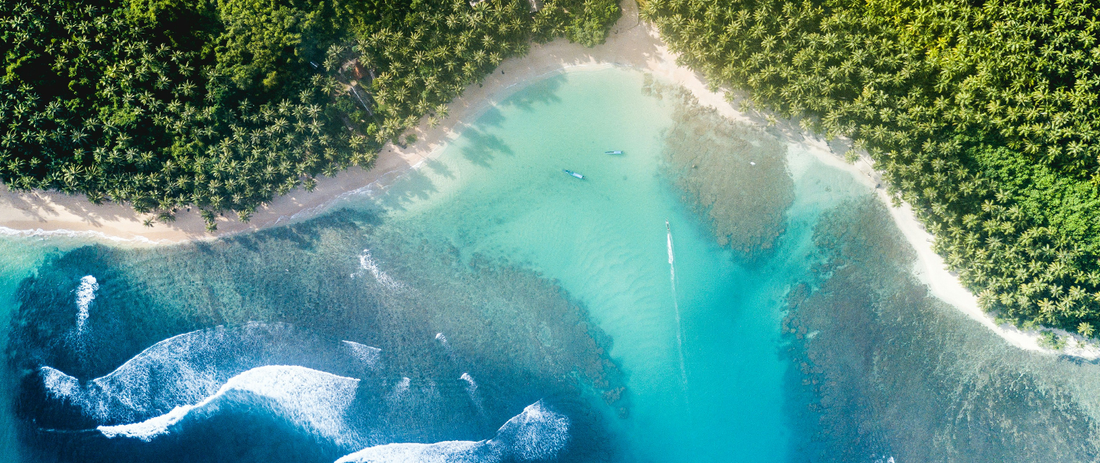
8 Tips for an Unforgettable International Surf Trip
Share
As your surfing progresses, so too does your desire to surf new, different or exotic surf breaks around the world. There’s nothing quite like the excitement of planning an international surf trip. Tropical waters, unique food and diverse surf cultures is unbeatable. But an overseas surf trip requires a little extra planning to ensure it goes off without a hitch. Whether you’re chasing barrels in Bali or cruising point breaks in Costa Rica, here are our top 8 tips for the ultimate international surf adventure.

1. Do Your Surf Spot Homework
Before you book your tickets, research your destination thoroughly. What’s the best surf season for the area? Are the waves suited to your skill level? Check reliable surf forecasting apps like Surfline or Windy to gauge the wave consistency and conditions. Look into local surf etiquette too—some breaks have unspoken rules or unique line-up dynamics.
Pro tip: Save some backup spots on your map in case the main break is overcrowded or flat. And if the surf gods don’t deliver, find alternative activities like snorkelling, hiking, or exploring the local culture.

2. Pack the Right Surf Gear
Your gear can make or break your trip, so be prepared. Here’s what you need:
- Surfboards: Pack a couple of versatile boards that handles a range of conditions. Check out our volume calculator,which will help find some board options to suit your weight and skill level.
- Board Bag: Protect your quiver with a durable travel bag. The SURFICA travel bags are a great option with space for packing extra towels or clothes.
- Ding Repair Kit: For minor dings, a repair kit can save your sessions.
- Wax: Bring wax suited to the water temperature at your destination.
- Fins, Leash & Fin Key: Pack spares of each in case of breakage.
- Wetsuit or Rash Guard: Check the water temperature beforehand—some tropical destinations might still require a thin wetsuit during early mornings.
- Reef Booties: Essential for sharp reef breaks or unfamiliar rocky entries.
If you’re short on space, research rental options ahead of time to see what’s available at your destination. Our dealer locator might you find a surf store close by.

3. Sort Out Your Travel Documents and Insurance
Make sure your paperwork is in order:
- Passport and Visa: Check expiration dates and visa requirements for your destination.
- Travel Insurance: Ensure your policy covers surfing and board transport. Injuries can happen, and lost or damaged gear is a risk.
- Driver’s License: A valid international driver’s license is often required for renting vehicles.
- Cash & Cards: Bring local currency and a travel-friendly card like a WISE card for low fees and easy ATM withdrawals.
Pro tip: Keep digital and printed copies of important documents, including your passport, insurance policy, and hotel details.

4. Stay Safe and Healthy
Health issues can ruin your trip faster than a flat surf forecast. Prepare for anything:
- First Aid Kit: Include antiseptic, band-aids, painkillers, and antihistamines.
- Sun Protection: Bring reef-safe sunscreen, zinc, lip balm with SPF and a hat to shield yourself from harsh tropical sun.
- Insect Repellent: A lifesaver in mosquito-heavy areas.
Research the nearest medical facilities at your destination, and if you’re headed to remote areas, pack a small emergency supply of bottled water and non-perishable snacks.

5. Travel Light but Smart
Packing for an international surf trip means balancing essentials with travel weight restrictions. Stick to versatile clothing that can handle both surf sessions and exploring the local area:
- Lightweight, breathable clothing like boardshorts, bikinis, and rash guards.
- A light rain jacket for unexpected tropical downpours.
- Flip-flops and sturdy sandals for beach-to-town transitions.
- A portable surf poncho for easy wetsuit changes.
- A collapsible water bottle to stay hydrated during long sessions.

6. Download Surf and Travel Apps
Technology can make your trip smoother and more enjoyable. Download these essential apps before you leave:
- Surfline or Magicseaweed for wave forecasts.
- Windy for wind and weather updates.
- Google Maps for navigation.
- Translator apps for seamless communication.
- Spotify or Audible for in-flight entertainment or downtime.
Also, bring a power bank and a universal travel adapter to keep all your devices charged.

7. Immerse Yourself in the Local Culture
Surfing isn’t just about the waves; it’s about the adventure. Respect the locals and their surf breaks by learning the etiquette and taking time to engage with the culture. Try local foods, explore nearby attractions, and leave the beach cleaner than you found it. A little humility and respect go a long way in creating positive experiences both in and out of the water.

8. Build Flexibility Into Your Itinerary
When traveling internationally, unexpected delays, weather changes, or crowded surf breaks can throw a wrench into your plans. Avoid rigid schedules and allow room for spontaneity. A flexible itinerary means you can chase better waves, explore off-the-beaten-path breaks, or take a detour to soak in the local culture. Booking accommodations with flexible cancellation policies and giving yourself buffer days for travel can make a huge difference in the success of your trip.
Pro tip: Keep an eye on surf conditions daily and be ready to adjust your plans to maximize your time in the water. Flexibility is key to turning a good trip into an unforgettable adventure.
Bonus Tip: Insure Your Boards
Flying with surfboards can be nerve-wracking. Make sure they’re packed well with bubble wrap or soft towels inside the bag and always get travel insurance that covers damaged gear. Some airlines are more surfboard-friendly than others, so check their policies before booking your flight.
